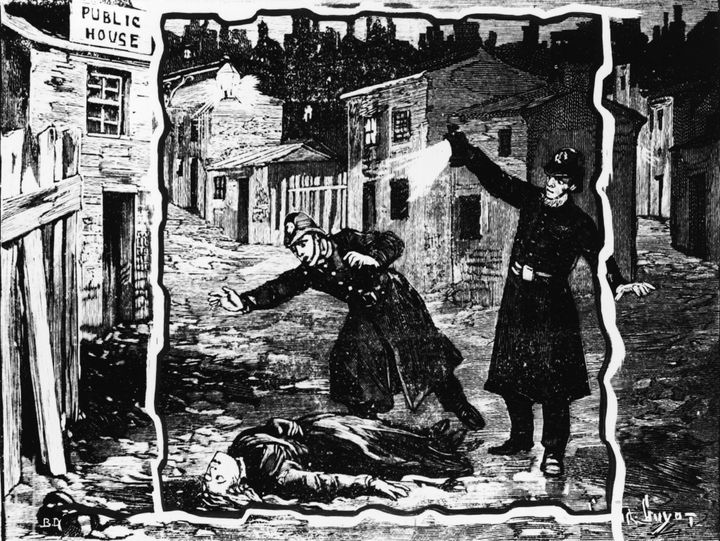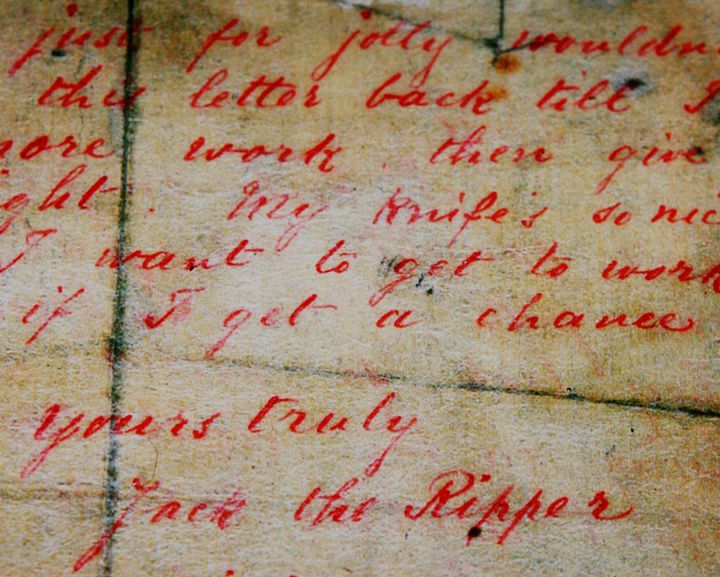Letters supposedly signed by Jack the Ripper have been analysed by a forensic linguist who has come to some surprisingly topical conclusions.
It is said that the shadowy figure who stalked the foggy alleyways of Whitechapel in 1888 murdering five women during his reign of terror was also a prolific letter writer too – or was he?
Manchester University’s Dr Andrea Nini decided to focus on two of the earliest letters supposedly sent by the serial killer (more than 200 are attributed to him) - namely the ‘Dear Boss’ letter, in which the name Jack the Ripper was first written, and the ‘Saucy Jacky’ postcard.

Most of the letters signed ‘Jack the Ripper’ were – and still are – regarded as hoaxes. After the first four were received, police decided to publish them, after which hoaxers began to send copycat letters claiming to be written by him.
Dr Nini used modern techniques to analyse the letters, uncovering certain shared distinctive linguistic constructions, such as the use of the phrasal verb to keep back (to withhold), in two of the most iconic early texts. He also found evidence that a link exists between these letters and another key text in the case, the ‘Moab and Midian’ letter.

He said: “My conclusion is that there is very strong linguistic evidence that these two texts were written by the same person. People in the past had already expressed this tentative conclusion, on the basis of similarity of handwriting, but this had not been established with certainty. I also found evidence that could link the author of these two letters to the so-called ‘Moab and Midian’ letter, which some people believe was a hoax created by the Central News Agency of London.”
The theory that at least some of the Jack the Ripper letters constituted an early, Victorian brand of fake news, is not a new one.

In fact, former Bedfordshire murder squad detective Trevor Marriot has gone so far as to suggest the very concept of the Ripper would not have existed at all, were it not for a “drunken” journalist named Thomas Bulling with the aforementioned news agency.
In 2013 during an 11-year-cold case review of the killings, Marriot said: “The reality is there was a just a series of unsolved murders and they would have sunk into oblivion many years ago, but for a reporter called Thomas Bulling.”
Bulling, Marriot says, was paid to supply crime stories to newspapers, and the writing on the letters in question was “strikingly similar” to his own hand.
He added: “Police got a letter that Bulling had written about the murders which he signed Jack the Ripper. It has kept this mystery alive. You have to ask yourself if Jack is a myth… There just isn’t a Jack the Ripper as such.”
While Dr Nini’s findings do not identify the killer, nor definitively the author of the named texts, they do constitute new forensic evidence in the Jack the Ripper case.
Last year crime author Patricia Cornwell published a second book purporting to detail “proof” of the identity of London’s most famous serial killer, pointing the finger squarely at British impressionist painter Walter Sickert.
Cornwell’s prime evidence regards scientific analysis of stationery used by Sickert, the same of which was used in some letters sent to the police.
The best-selling author’s research has found that three Sickert letters and two “Ripper” ones came from a paper run of just 24 sheets.
The killer’s identity continues to be one of the most enduring puzzles of our time, with other suspects ranging from Alice in Wonderland author Lewis Carroll, to the wife of an eminent Victorian surgeon and renowned poet Francis Thompson.
While the accused have been investigated by sleuths throughout the years, no-one has ever been able to conclusively prove the Ripper’s identity.
